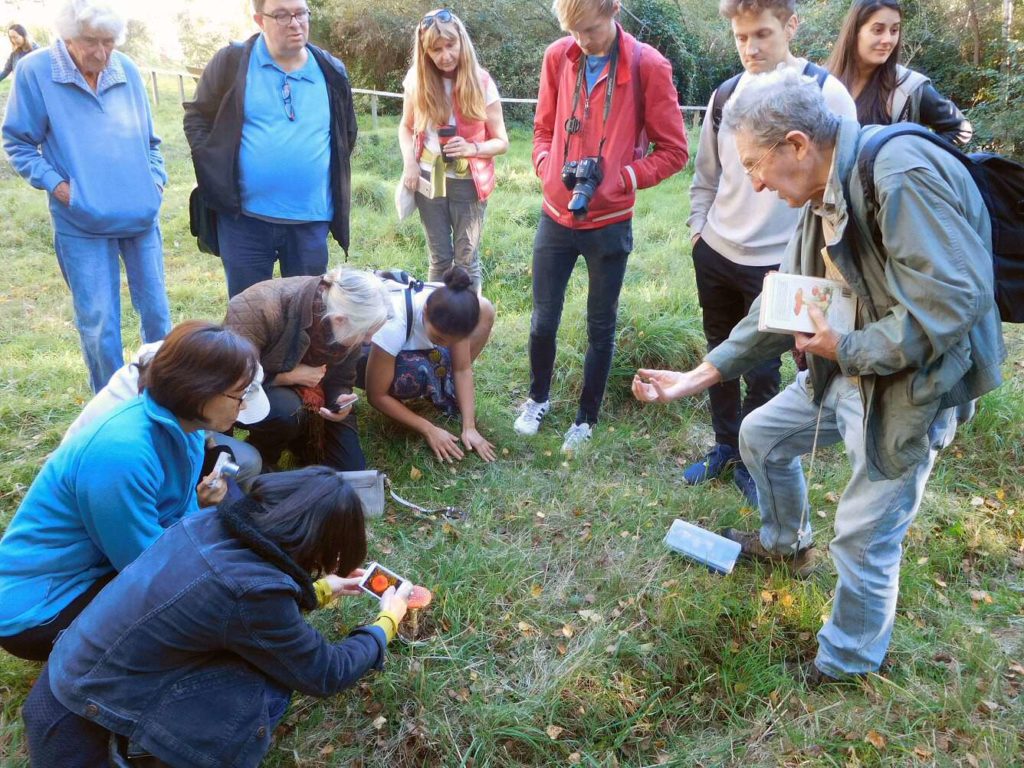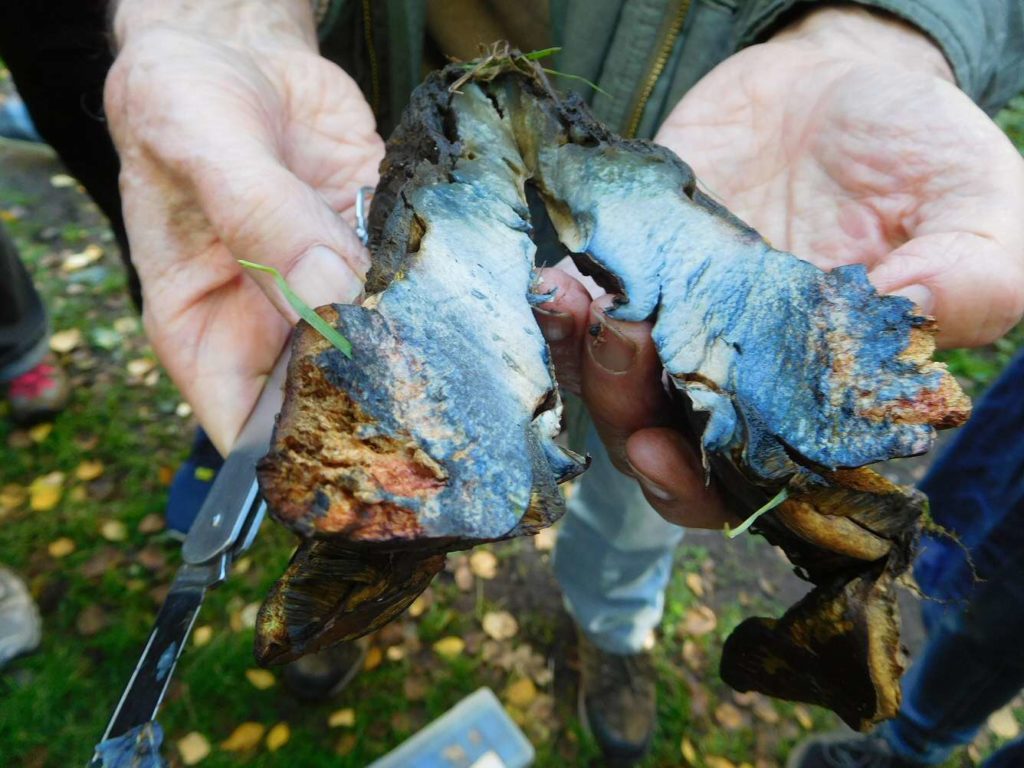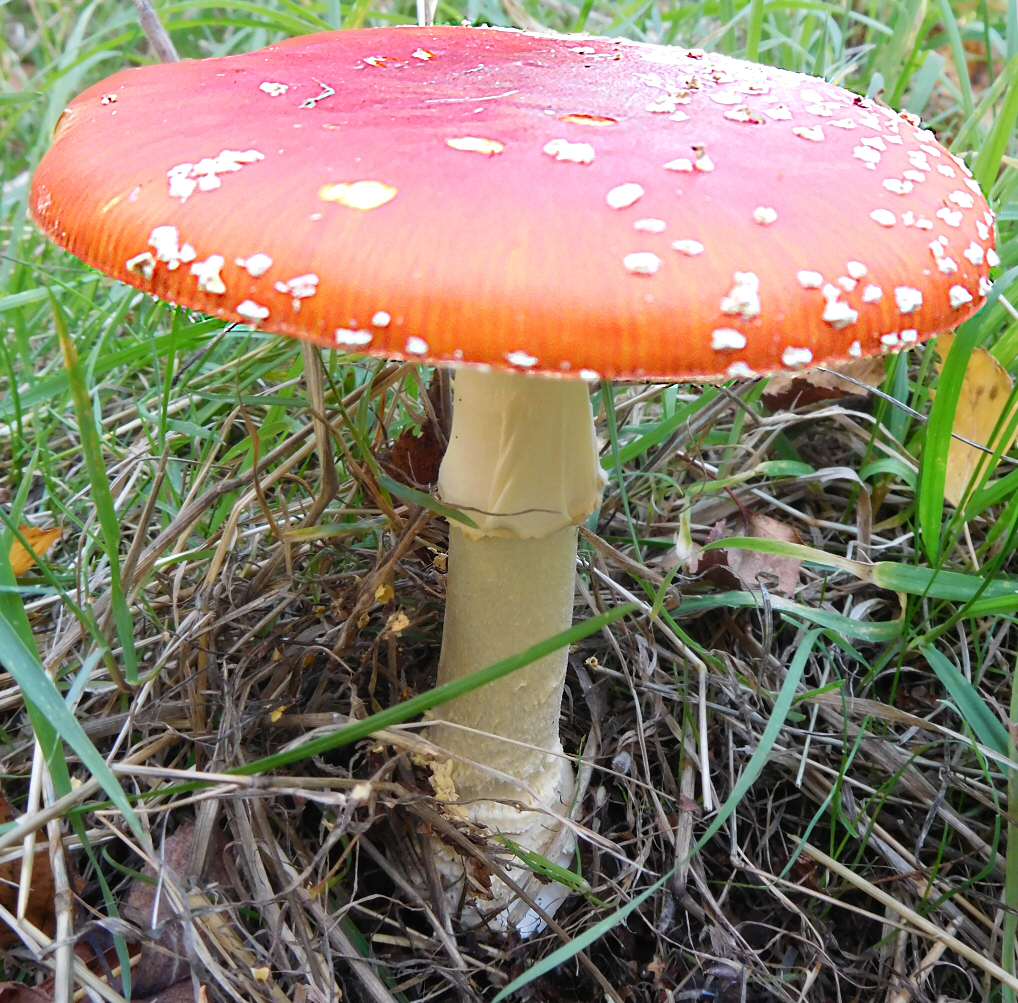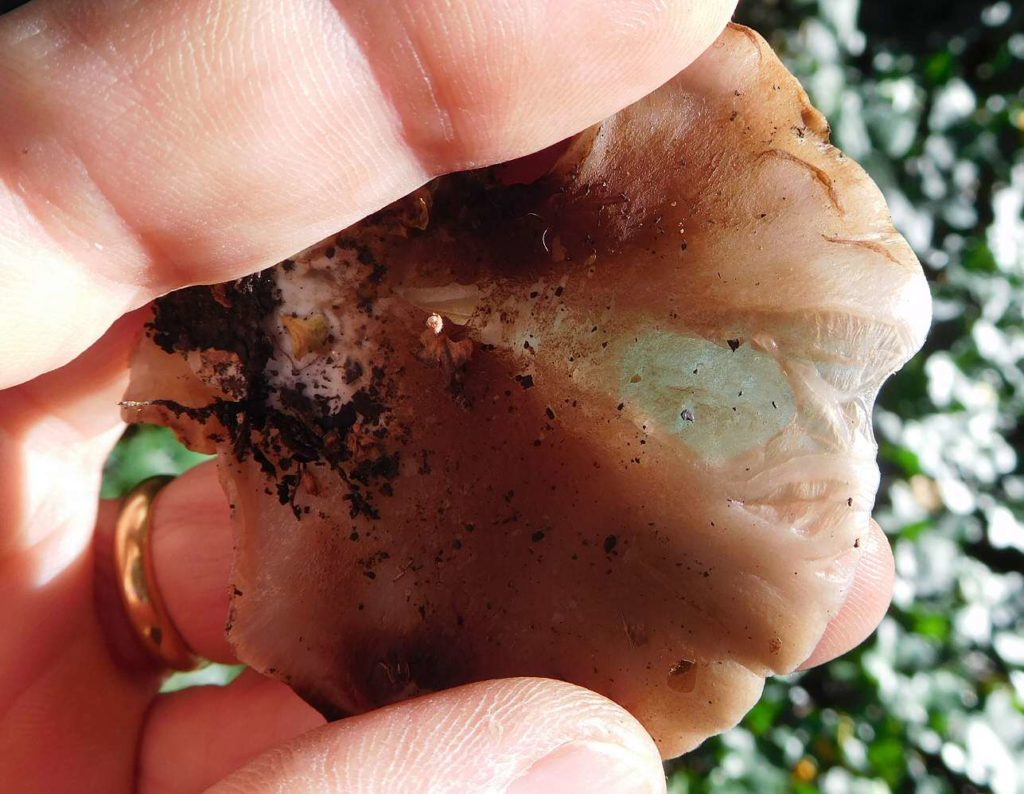


It was a beautifully sunny and warm late October day, and Alick was pessimistic. It had been far too dry for weeks and there would be very few fungi on the walk. But he admitted that children were very good at spotting mushrooms.
They were. We found 31 species, more if you count the small Ascomycetes of the kinds whose fruiting bodies are little dots on rotting twigs. Some indeed like the Fly Agaric and the Scarletina Bolete were large, colourful, and spectacular; others smaller and quieter, but often also beautiful, and all fascinating. None were stranger than Crepidotus mollis, the Peeling Oysterling, a bracket-shaped gill mushroom with a peeling cuticle, and an extraordinary jelly-like consistency revealed by gently stretching the cap, as shown in the photo.

Alick Henrici writes that he found four species new to the reserve during the Fungus Foray:
- Clitocybe phaeophthalma (aka C. hydrogramma); “nasty smell”
- Mycena crocata; “old specimen, unexpected but colours unmistakeable”
- Panellus stipticus; “a common late season species on wood”
- Pleurotus dryinus; “on Elder at post 6, not very common but often on this host”
